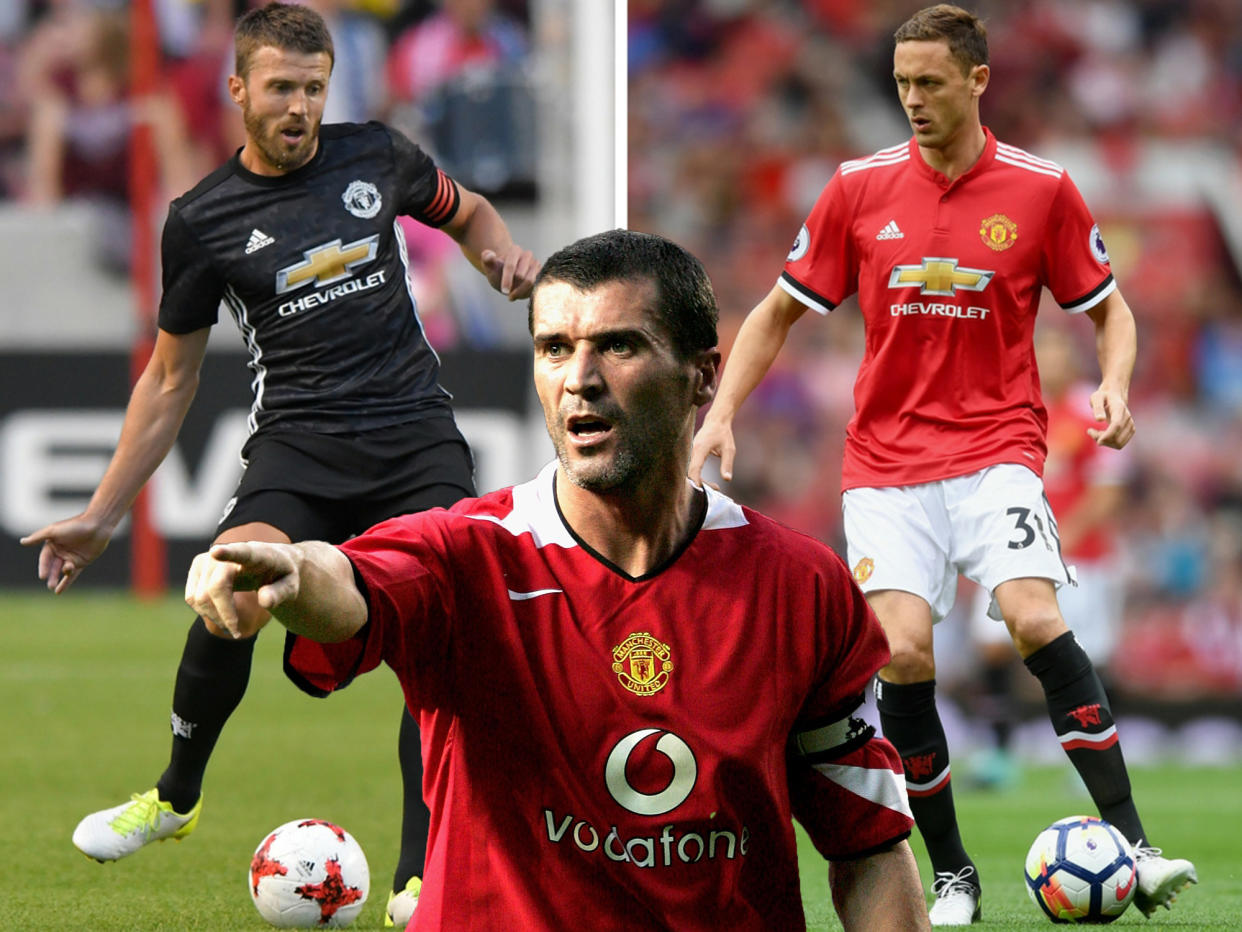Matic is replacing Carrick as United's new Keane

When Roy Keane left Manchester United, he wasn’t replaced until the end of the season. When he was, Alex Ferguson elected to bring in Michael Carrick. Carrick even took the number 16, perhaps a dig from Ferguson to Keane that he had been entirely replaced. Keane had gone, and in his place was a slightly meek player who had exceptional mid-range passing, and would occasionally get in the way of a through ball. It wasn’t the same, and he was nowhere near the equal of Keane, but it was more than enough.
The arrival of Carrick was what it took to knock Chelsea off their perch. Armed with Wayne Rooney, Cristiano Ronaldo, Ryan Giggs and Louis Saha ahead of Carrick and Paul Scholes, United could launch counter-attacks to fly through the opposition. Ronaldo was not yet at his United-era peak, but there was enough ability to batter most of the sides in the league. Other players were vital, but it was Carrick who enabled United to fundamentally change the way they had played compared to the seasons when they managed both a decline in investment, and a decline in Keane’s mobility.
United won 11 of their first 13 games. They scored eight over the first two matches, beating Fulham 5-1 and then Charlton 3-0. Once they were ahead in the league, they didn’t let go. In the past, Ferguson had talked about coming good around Christmas, when he would start crawling inside the guts and brains of whoever was above him, and start setting up camp to needle them. It worked often enough, and then Jose Mourinho arrived.
READ MORE: Matic’s Manchester United move leaves Chelsea feeling blue
READ MORE: Gossip – Aubameyang demands departure, Zlatan to sign new deal?
READ MORE: Premier League top 6 prediction – where does YOUR team rank?
Mourinho wasn’t interested in Ferguson’s mind games. Always with an eye on taking over at Old Trafford, he saw no point in dismantling Ferguson as he did Rafael Benitez and Arsene Wenger. But he wasn’t rattled by United, and for two seasons, the Premier League was his. He wasn’t too keen on rotation, and he showed Ferguson something vital: points won in August were just as valuable as those picked up in May. Chelsea would take all the points on offer with their ridiculous power, and then were free to coast over the line when fatigue might have started to set in.
Ferguson noted his opponent’s strength and adopted it as his own. With Carrick and the rest of his new-look side, shorn of the leggy Ruud van Nistelrooy, he could use his own blitzkrieg tactics.
When Mourinho returned to Chelsea for a second time, there were more than a few suggestions that he had really wanted to be where David Moyes was now sitting. He achieved little in his first season, not drilling into his side a ruthlessness to win an easy league. The only joy he really took was in showing Brendan Rodgers just how much he could spoil someone’s year.
The second year was different. Nemanja Matic was added in the year before, but he was joined in the summer by Diego Costa and Cesc Fabregas. Chelsea were undefeated in their first 14 games, drawing three and remaining top for the entire season. Chelsea’s lack of rotation was again notable, and they were fortunate that injuries didn’t derail their best players. But Mourinho had shown again that it is far easier to lead from the front if you have the mentality to do so.
READ MORE: Swansea 0 Man Utd 4 – FULL MATCH REPORT
READ MORE: Swansea v Manchester United – how the match unfolded
Mourinho’s first season with United was as underwhelming as it was with Chelsea. Rescued with a calculated gamble on the Europa League, United had failed to have a meaningful impact on the Premier League. His now former club won the league with rejuvenated former players, despite Costa threatening a mid-season walkout. United were tedious in attack and insufficiently focused at the back. There was no great tangible improvement with Mourinho’s influence, but there were occasional hints.
In the summer, Mourinho made it clear to Woodward that he wanted four players, and let his bumbling chief executive get to work. Victor Lindelof and Romelu Lukaku arrived quickly. A touch later, Matic joined to replace Michael Carrick, tied down for one final season but no longer fit enough to feature in most games over the course of a season. Matic offers his teammates the same defensive protection and incisive passing that Carrick when he joined in the summer of 2006. It was five years too late, at least, but United have finally alighted on a proper replacement for one of their most important signings under Ferguson.
United have Mourinho, the manager who knows best of all how to use and manage early momentum. He has his own version of Carrick, and has bombed out his own ageing striker – where there was Van Nistelrooy, you can now read Wayne Rooney. He has eight goals in his first two matches. This is a new United side with a new spine. It is plainly too early to draw any serious conclusions, but there are too many factors to ignore the potential foundations of some new success.

 Yahoo News
Yahoo News 

